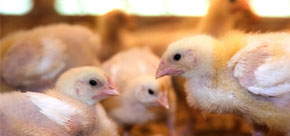Ducks Standards
HOUSING, SHELTER AND HANDLING FACILITIES Version 5.1 (modified)
Click to view
Key – Those standards which have greater significance (all other standards are normal)
Recommendation – Those which do not affect certification
New – A completely new standard which the member must now adhere to
Revised – A standard that has changed and requires the member to take some different or additional action to before
Upgraded – The standard has been upgraded to a Key standard or from a Recommendation to a full standard
Appendix – Referenced in ‘How you will be measured’. Indicates that additional information is provided in the Appendices, which are available at the end of each section.
KH.HF.1 Key
Housing/hatchery must be constructed and maintained to provide a safe and secure environment for birds/ducklings
How you will be measured
KH.HF.1.a
KH.HF.1.b
KH.HF.1.c
KH.HF.1.d
KH.HF.1.1
The sound level in housing must be minimised
How you will be measured
KH.HF.1.1.a
KH.HF.2
Housing/hatchery must be appropriately and effectively ventilated
How you will be measured
KH.HF.2.h
Records of filter cleaning/changing
KH.HF.2.1
Temperature records must be kept
How you will be measured
KH.HF.2.1.b
Temperature records
KH.HF.3
Floors must be constructed and maintained in a manner that minimises the risk of injury
How you will be measured
KH.HF.3.e
KH.HF.3.f
KH.HF.4 Key
Conditions within the housing must be maintained in a manner that ensures birds are able to keep clean
How you will be measured
KH.HF.4.e
KH.HF.4.h
- Cleaning and disinfection policy
- Environmental bacteria test records
KH.HF.4.1
Surfaces within housing/hatchery must be in good condition and must be able to be cleaned and disinfected
KH.HF.4.7
Ducklings must be loaded into clean duckling boxes
How you will be measured
KH.HF.4.7.a
KH.HF.4.8
Drains in production areas are accessible and cleanable
KH.HF.5
Housing/hatchery must be lit to allow normal behaviours, rest and effective inspection of birds/ducklings
How you will be measured
KH.HF.5.e
KH.HF.5.f
KH.HF.8
Automatic equipment is inspected once a day
How you will be measured
KH.HF.8.a
Equipment inspection records
KH.HF.8.1
An alternative power supply must be available which is capable of supplying all essential electrical systems within the poultry houses/hatchery
How you will be measured
KH.HF.8.1.a
KH.HF.8.1.b
Generator test record
KH.HF.8.3
Alarms must be responded to within 15 minutes
How you will be measured
KH.HF.8.3.a
Alarm records
KH.HF.8.4
Incubation equipment is alarmed for high and low temperatures and mains failure
How you will be measured
KH.HF.8.4.a
KH.HF.8.5
All incubators in operation must be checked twice daily for temperature, humidity and direction of turn
Incubator records kept and displayed
KH.HF.8.6
Duckling and egg disposal equipment and bill treatment equipment must be checked daily by trained operators to ensure it is working effectively, and a record kept of the outcome
Check records
KH.HF.9
Fire prevention measures must be taken
How you will be measured
KH.HF.9.a
KH.HF.9.b
KH.HF.9.c
KH.HF.9.d
KH.HF.9.e
KH.HF.9.f
KH.HF.9.g
KH.HF.9.h
- Government guidance on farm fires and protecting farm animal welfare: https://www.gov.uk/government/publications/farm-fires-protecting-farm-animal-welfare
- For additional guidance on animal welfare in severe weather visit: www.gov.uk/guidance/keeping-farm-animals-and-horses-in-extreme-weather
Further information on heat stress is provided in the Defra guidance document `Heat Stress in Poultry: Solving the Problem’: https://assets.publishing.service.gov.uk/government/uploads/system/uploads/attachment_data/file/69373/pb10543-heat-stress-050330.pdf
